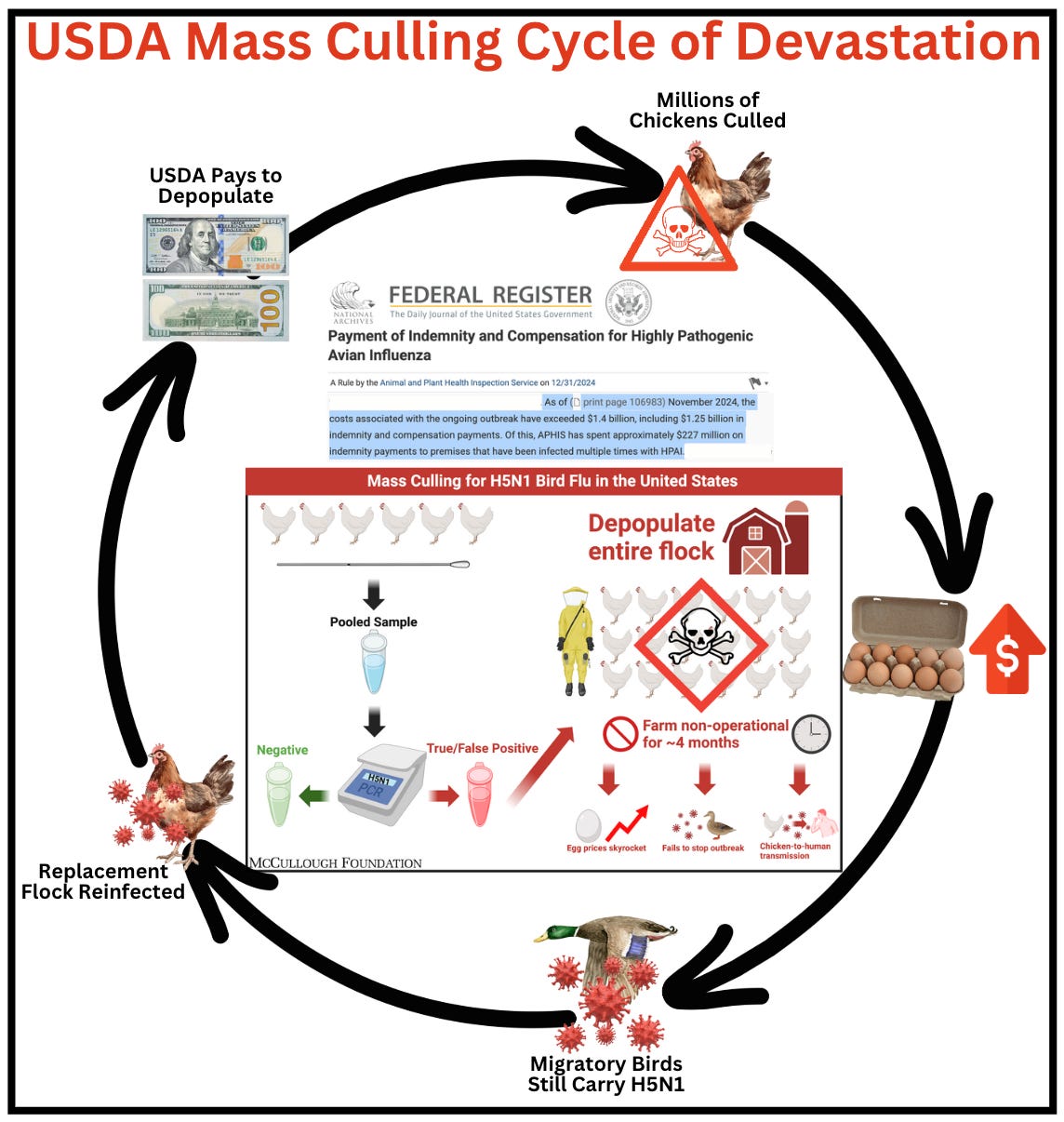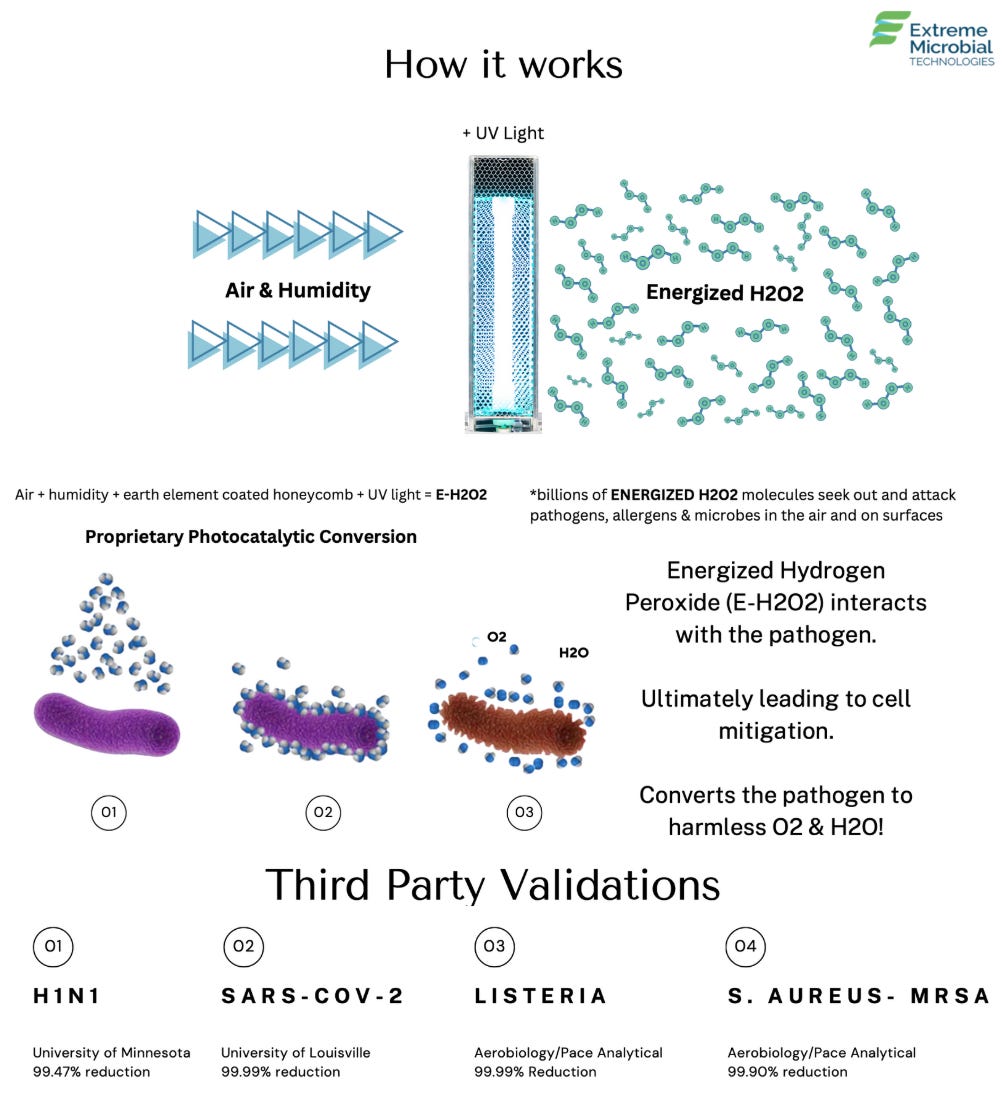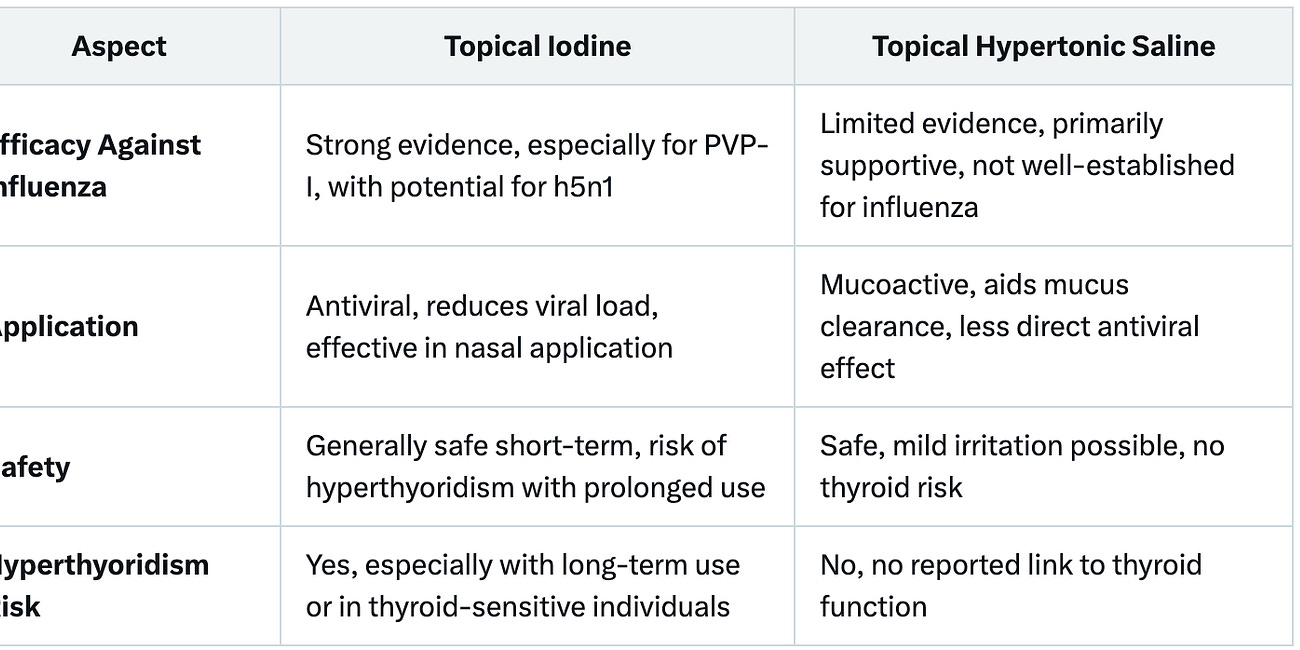As the USDA continues to employ the “Mass Culling Cycle of Devastation” bird flu biosecurity strategy that has already wasted over $1.25 billion in taxpayer money, disrupted America's food supply chain, led to chicken-to-human transmission, and failed to stop H5N1 bird flu — alternative solutions are urgently needed.
In this episode, I was joined by Randy Mount, CEO and founder of Extreme Microbial Technologies (EMT). Originally focused on mold remediation, EMT has expanded over the past decade to serve industries such as food production, poultry farming, and healthcare. Under Mount's leadership, the company developed a patented four-step process that identifies microbial threats, eliminates them, prevents recontamination, and monitors conditions in real time.
EMT's signature innovation—energized hydrogen peroxide—is produced using a proprietary UV-activated matrix that converts air and humidity into trillions of pathogen-fighting particles. With proven success against viruses like H1N1 and SARS-CoV-2, as well as bacteria such as MRSA, C. diff, and Listeria, EMT’s non-toxic, continuously operating systems are designed for use in occupied spaces, offering a great approach to pathogen control in critical environments.
Such a device could play a major role in combatting the H5N1 bird flu outbreak:
Because H5N1 shares the same lipid envelope structure as viruses like H1N1 and SARS-CoV-2—both of which EMT’s system has already been proven to neutralize through oxidation—there’s strong reason to believe it would be equally effective against H5N1.
Can be installed in barns, breeder facilities, hatcheries, and egg production areas to prevent outbreaks or significantly decrease spread.
Offers a preventive approach, avoiding mass depopulation of flocks (the current “nuclear bomb” strategy).
Ideal for early-stage containment and on-going defense against migratory bird-carried reinfection.
This system could be combined with the use of iodine-based nasal sprays and gargles, which hold promise in preventing zoonotic avian influenza transmission and human infection. Regular use of iodine nasal sprays by farmers, poultry workers, and veterinarians could help reduce viral carriage in the upper respiratory tract, lowering the risk of infection from direct animal exposure:
Conducting pilot operations that combine EMT’s surface-air purification system with prophylactic use of iodine-based nasal sprays and gargles among farm workers could be a major step toward finally ending the ill-advised “Mass Culling Cycle of Devastation”.
Epidemiologist and Foundation Administrator, McCullough Foundation
www.mcculloughfnd.org
Please consider following both the McCullough Foundation and my personal account on X (formerly Twitter) for further content.
















Share this post